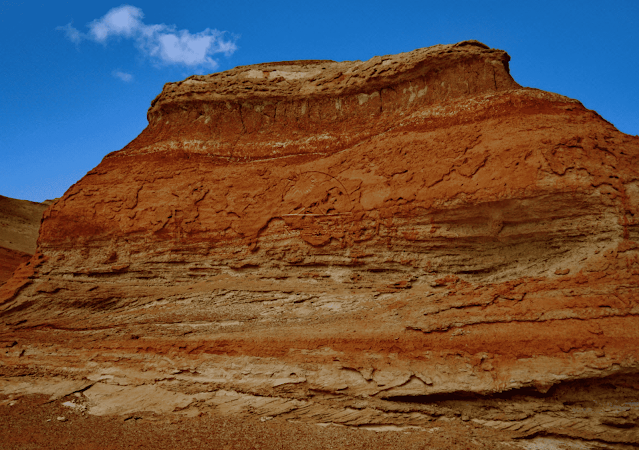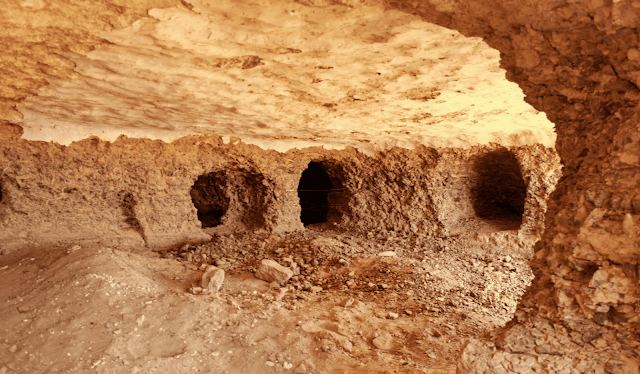Deir Abu Leefa north of Lake Qarun in Fayoum
The Monastery was probably founded by St. Panoukhius about 686 A.D and was in use from the 7th through the 9th centuries. It served as a haven for Christians seeking persecution. Immediately behind the Qasr El Sagha temple, and visible on the cliff face of the upper portions of the Deir Abu Lifa member giant cross-bedded sandstone, are a similar series of small man-made caves probably used for meditation. The monastery is typical primitive, its entrance is cut into the mountain and consisting of small caves carved into cliff sides that can be difficult to reach.
Deir Abu Leefa is a town and archaeological site located to the north of Lake Qarun in the Fayoum region in Egypt. It is home to a number of archaeological sites, including a large Coptic monastery. The monastery is believed to have been founded by the monk Abu Leefa.
The site also includes a number of other ruins, including a Roman fort and a number of ancient tombs. The area is a popular destination for tourists, with many visitors taking boat trips on the lake to view the ruins.



No comments:
Post a Comment